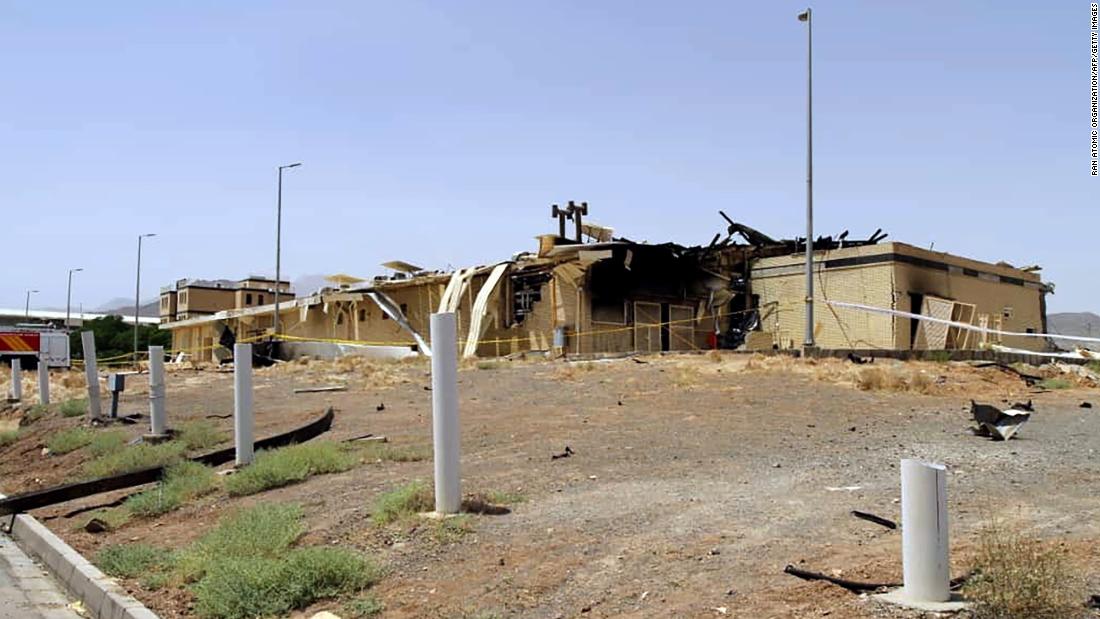
The change in alertness means that Iranian surface-to-air missile batteries would be ready to fire at targets that are considered a threat.
The official did not say how the US detected these indicators, but US satellites, spy planes and ships routinely operate in nearby airspace and international waters, where they continuously monitor Iranian activity.
Several US military officials declined to publicly comment on whether the US has intelligence related to Iran’s state of alert.
The United States is currently evaluating that the Iranian alert is not part of a training exercise, but rather is a response to recent events and nervousness about whether there is an unknown threat to the regime following multiple mysterious explosions at various facilities this month.
A struggle to explain
Iran has struggled to explain the cause of those incidents, including a fire that caused significant damage to a site that has been key to the country’s uranium enrichment program, prompting questions about possible sabotage.
International speculation has focused on the theory that Israel could be behind some of the blasts, despite US officials originally saying that the Israelis had assured them they were not responsible.
However, Israeli Defense Minister Benny Gantz did not rule out that possibility while discussing the issue on July 5, saying: “Not all incidents that occur in Iran necessarily have something to do with us … All of those systems are complex, they have very high security restrictions and I’m not sure they always know how to maintain them. “
Publicly, the United States has not commented on a possible Israeli connection. Senior U.S. officials are trying to learn more about the blasts and who or what could have been responsible, the official said.
One of the most critical incidents occurred on July 2 when a fire caused significant damage to a building at the Natanz nuclear plant in Iran. That site was previously the target of a cyber attack believed to have been carried out by Israel and the US that came to light with the 2010 discovery of the Stuxnet computer virus.
Iranian state television previously quoted an anonymous security official as saying that an investigation into the fire at the Natanz nuclear complex found no “evidence” of sabotage.
However, the Persian BBC service also reported that it received a strangely worded statement from an unknown group calling itself “Cheetahs of the Fatherland,” who claimed they were behind the blast without providing evidence.
Other unexplained incidents that have occurred in recent weeks include a large explosion near the city of Parchin and its military complex. Another explosion hit the Zargan power plant in Ahvaz. That incident was quickly followed by a suspected chlorine leak that sickened dozens in southeastern Iran.
While the cause of these incidents is still unclear, senior US military officials are also beginning to privately indicate that it seems increasingly unlikely that all of these events are due to industrial accidents due to the amount that has occurred. .
General Kenneth McKenzie, commander of the U.S. Central Command, has only provided vague answers when asked about the series of incidents.
“I will leave that alone. The Iranians — are talking a lot about it. I only hear what the Iranians say about it,” he told reporters earlier this month.
yes
But days after making those comments, McKenzie seemed to suggest that there was intelligence on what might have happened.
“We have seen and observed these explosions in Iran. I am not going to be able to speculate what may or may not have done to the Iranian nuclear program,” he said.
A key concern is that Iran could “lash out” and strike back unpredictably if it believes it could be under attack from Israel or the United States, the official said.
The United States is also concerned that Iran’s unreliability in the operation of its air defense systems means that moving to high alert status could also pose a threat on its own.
In January, a Ukrainian civilian plane was shot down shortly after the takeoff of an erroneously launched ground-to-air missile by Iran.
Meanwhile, Iran’s military tactic of putting its air defenses on alert may not really address the perceived potential threat, the official said.
There is no indication that fighters, bombers, or missiles have been launched against Iran, meaning that any possible attack could have been ground or possibly cybernetic.
But if there are opposition groups on the ground in Iran carrying out attacks on key facilities there, it is unclear to the US whether any outside personnel, money, or organization is supporting such an effort.
.